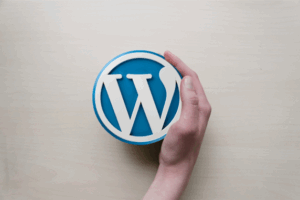
Roofs play a crucial role in maintaining the integrity and safety of any commercial building. Regular maintenance is vital, but how do you know when it’s time for significant repairs or even a complete replacement? Identifying leaks, sagging roofs, and visible wear are crucial signs that might indicate your commercial roof needs immediate attention. These indicators can stem from structural issues or water damage, posing greater risks if overlooked.
For building owners, understanding these warning signs can help in making informed decisions about repair or replacement Observing active leaks, water stains, or noticing a sagging roof deck can point to possible structural problems. These issues are often a result of underlying damage that requires immediate attention to prevent further complications. In some cases, opting for home roof replacement from Vertex Roofing may be a good solution to restore the integrity of the building. By addressing these concerns early, building owners can avoid more expensive repairs and extend the lifespan of their roofs.
Key Takeaways
- Identify key damage signs like leaks and sagging.
- Assess if repair or replacement is needed.
- Professional services can ensure safety and value.
Recognizing Signs of Roof Damage
Identifying issues with a commercial roof early can prevent costly repairs and extend its life. Visible and structural damage indicators, alongside water-related issues, are critical aspects to monitor.
Visible and Structural Damage Indicators
Visible damage can manifest as missing shingles or blisters. These indicators often signal underlying issues that may compromise the roof’s performance. For example, blisters or bubbles on the roof surface suggest trapped moisture, which might lead to material deterioration. Missing shingles can expose the roof to further damage from the elements.
Structural integrity is essential for a commercial roof’s longevity. Cracking, sagging, or any form of deformity could be a warning sign the roof needs professional evaluation. Addressing such damage promptly can prevent more severe complications, preserving the building’s safety and function.
Water-Related Issues
Commercial roofs often face water-related issues like pooling water and water leaks. Pooling water on a roof surface, if left unchecked, can promote degradation and reduce the material’s lifespan. It can also lead to water entering the building, causing interior damage and higher energy bills.
Water stains inside the building often originate from roof leaks. These may result from deteriorated materials or improperly sealed joints. In addition to aesthetic concerns, water intrusion can foster mould growth, impacting air quality. Attending to these signs quickly is vital to maintaining both the structure and the health of its occupants. In situations where moisture damage begins affecting interior spaces, working with professionals like Super Clean Restoration can help address water intrusion before it leads to more extensive deterioration.
Evaluating Repair and Replacement Options
Assessing whether to pursue roof repair or a complete replacement requires analysing several key factors. These considerations include weighing the condition of the existing materials, the availability of quality contractors, and the potential energy savings offered by new installations. Each decision can significantly influence long-term costs and roof performance.
Considerations for Repair versus Replacement
When evaluating whether to repair or replace a commercial roof, it is crucial to assess the extent of damage. Minor issues such as small leaks or isolated water stains might only require targeted repairs. In contrast, widespread damage like sagging or structural deficiencies often necessitate a full roof replacement.
Energy efficiency is another vital consideration. Older roofs lacking adequate insulation can lead to higher energy costs. Replacing an inefficient roof with modern materials can significantly reduce energy expenses over time. Additionally, the age of the roof plays a critical role. If a roof is approaching or exceeding its expected lifespan, replacement might be more cost-effective than continuous repairs.
Material and Contractor Selection
Choosing the right roofing materials and contractors is essential for a successful project. Commercial roofing materials vary in durability, cost, and suitability for specific climates. Options like metal roofs, TPO, or modified bitumen each offer unique benefits and drawbacks. It is crucial to select materials that align with the building’s needs and budget.
Seeking commercial roofing contractors with expertise in the chosen materials is equally important. A reputable roofing company can provide a free roof estimate and valuable insight into the project’s scope. Ensure contractors have a proven track record and positive reviews before proceeding with any roof repair or new roof installation. Prioritizing experienced professionals ensures quality workmanship and optimal long-term performance.
Conclusion
Regular inspection and maintenance are crucial for identifying when a commercial roof requires repair or replacement. Visible damage, such as water leaks, stains, or pooling water, are important indicators.
Addressing these signs promptly can prevent further structural damage and help extend the roof’s lifespan. A proactive approach is essential for maintaining the structural integrity and safety of commercial buildings.




